The RA-6000 and DT-6000 aren’t too different to other Rotel models. The aesthetics are similar, as is the finish, available in black or silver. The buttons, display and other features remain unchanged. However, there is some eye-catching detail at the corners of the front panel. The vertical aluminium fins on the Rotel 6000 echo those found on the brand's models from the early 2000s.
The RA-6000 is a premium Rotel model (positioned between the classic models and their even more high-end Michi series), diversifying the brand’s catalogue by closing the significant price gap created by the Michi range. To bring things full circle, the Diamond Series also marks Rotel’s 60th anniversary, which it celebrated this year.
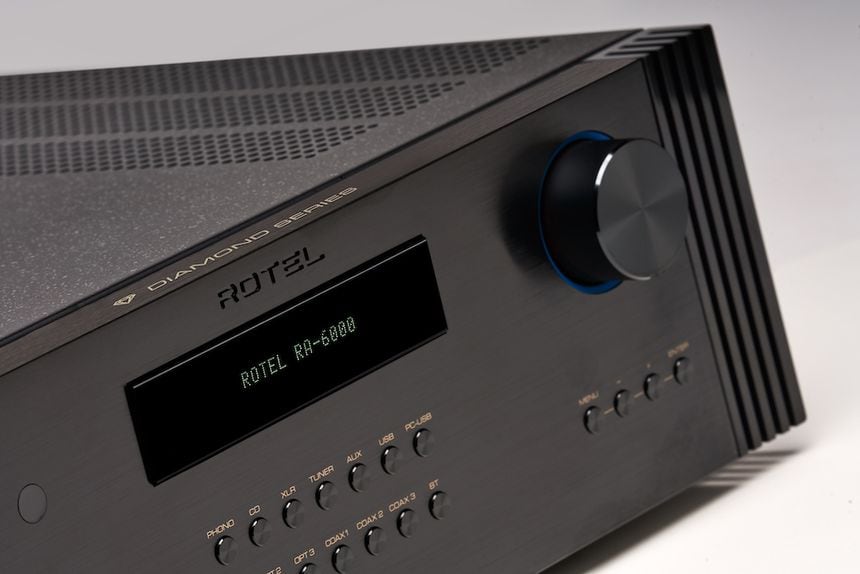
Specifications
● Integrated amplifier
● Price : 4,499 €
● Power : 2x200 watts into 8 ohms
● Harmonic distortion rate : < 0.0075 %
● Damping factor : 600
● DAC : 384 kHz / 32 bits, MQA, Roon Tested
● Connectivity : Bluetooth aptX HD, 4x RCA analogue inputs including 1x phono, 1x XLR input, 3x coaxial digital inputs, 3x optical digital inputs, 1x front USB port, 1x USB DAC port, 1x headphone output, 1x stereo pre-amp outputs, 2x mono sub outputs, control via RS232, Ethernet, 12V trigger, IR report
● Other : Available in silver or black, IR remote control
● Dimensions (w x h x d) : 431 x 144 x 425 mm
● Weight : 18.8 kg
Overview of the Rotel RA-6000
You might have expected a slightly more distinct, exclusive aesthetic for this special anniversary series. However, Rotel has decided to continue its love affair with minimalism, opting for a design typical of the Japanese manufacturer, featuring a logically organised brushed aluminium front panel.
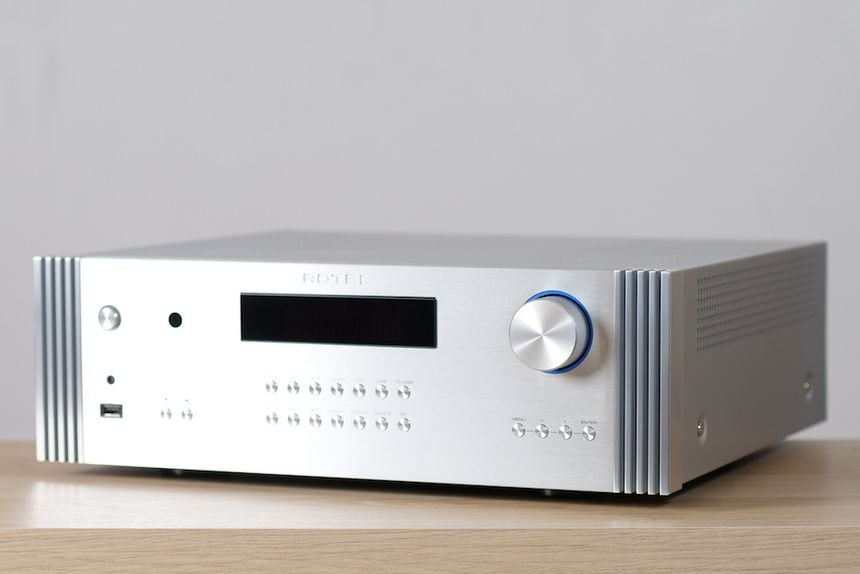
The power button on the left turns the device off completely, which is much more convenient than a button on the rear panel. Of course, it’s also possible to put the RA-6000 into standby mode using the remote control without turning it off completely. Underneath the power button are two inputs: a USB port with enough power to charge a mobile device and a mini 3.5 mm headphone jack. Next to this, you can choose between two sets of speakers via the classic A/B speaker buttons.
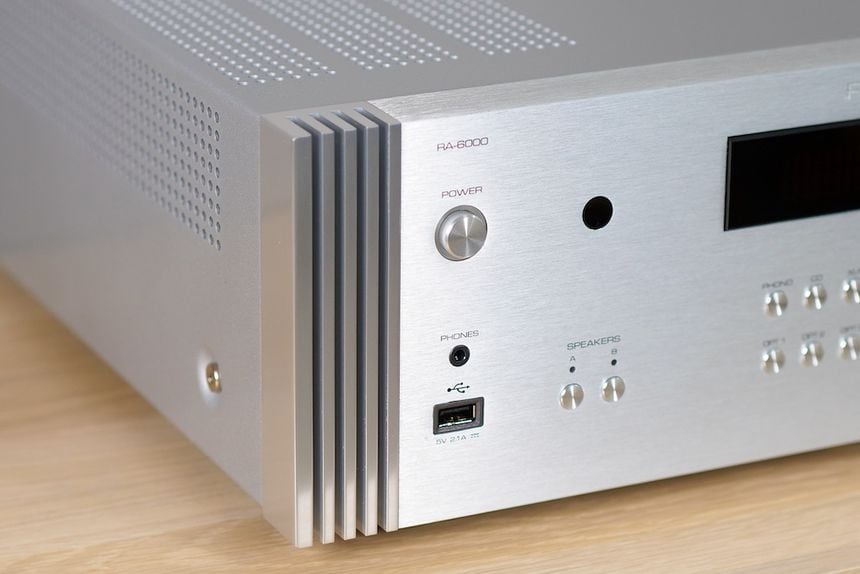
In the centre, a two-line display shows the sampling rates of the digital audio streams and their formats. This is complemented by 14 direct access buttons for an equal number of audio sources. The RA-6000 seemingly brings everything into one device, so it might be tricky to work out what’s what.
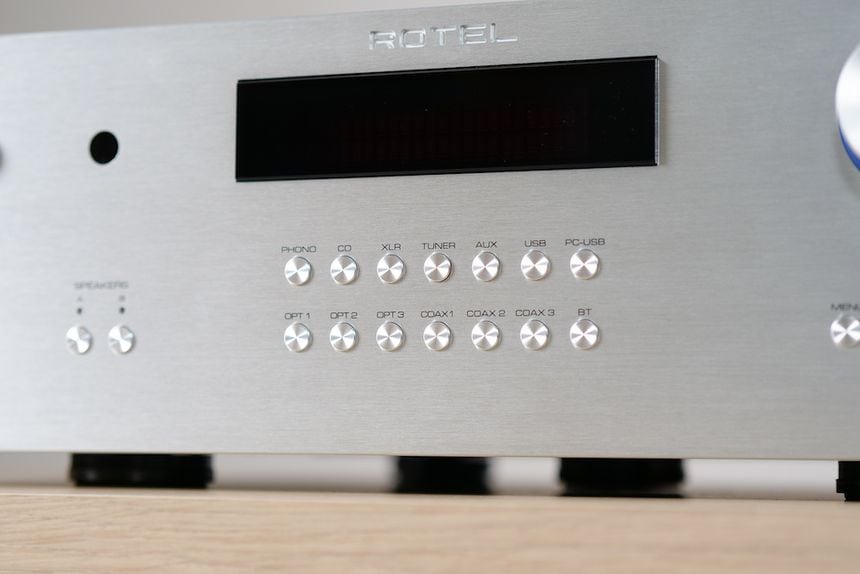
The volume control is located above the four buttons designed to navigate the menus with the help of the display. The control felt slightly slack and, given the premium level of the device, we would have liked something more robust.
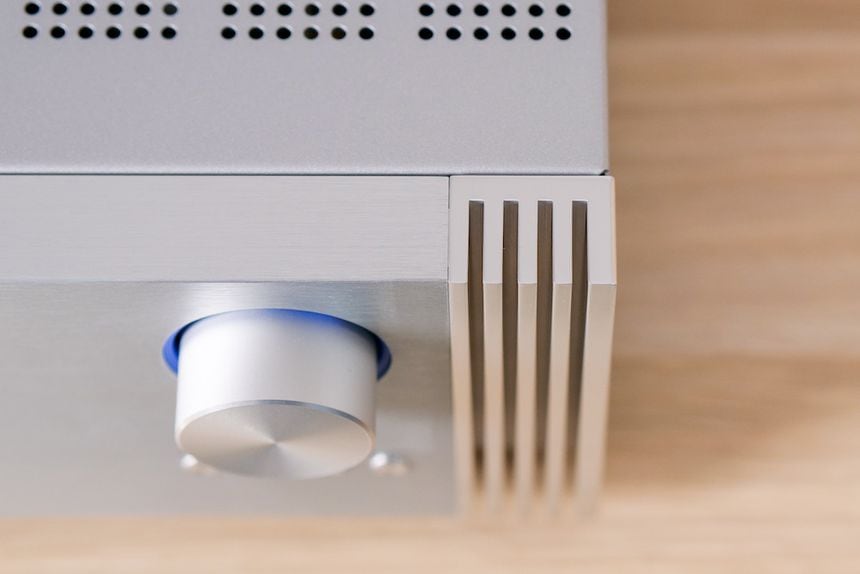
The rear panel is packed with a wide variety of inputs, and it’s got the most current options covered (though perhaps it could use an HDMI ARC input so that the RA-6000 can be used in a video context too?) However, there's still plenty to look forward to here. For example, the USB DAC via a USB-B connection handles files up to 384 kHz in 32-bit. It also accepts MQA, making it possible to connect a computer or a streamer with a USB output.
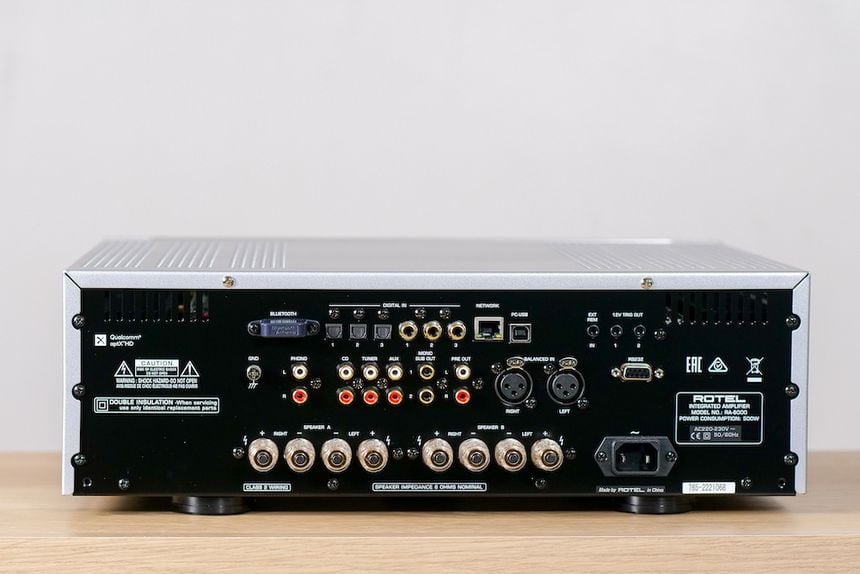
Inside, you’ll find two enormous lateral finned heat sinks and, in the centre, a large toroidal transformer which is specific to this Diamond Series range. Instead of a compact class D circuit, there’s a traditional class AB circuit, which has more cumbersome components and tends to heat up a little more but is still far from redundant. The RA-6000 has a power consumption of 500 Watts and delivers 2x200 Watts of power under 8 ohms. Rest assured that the current is used optimally; there’ll be no bottlenecking here.
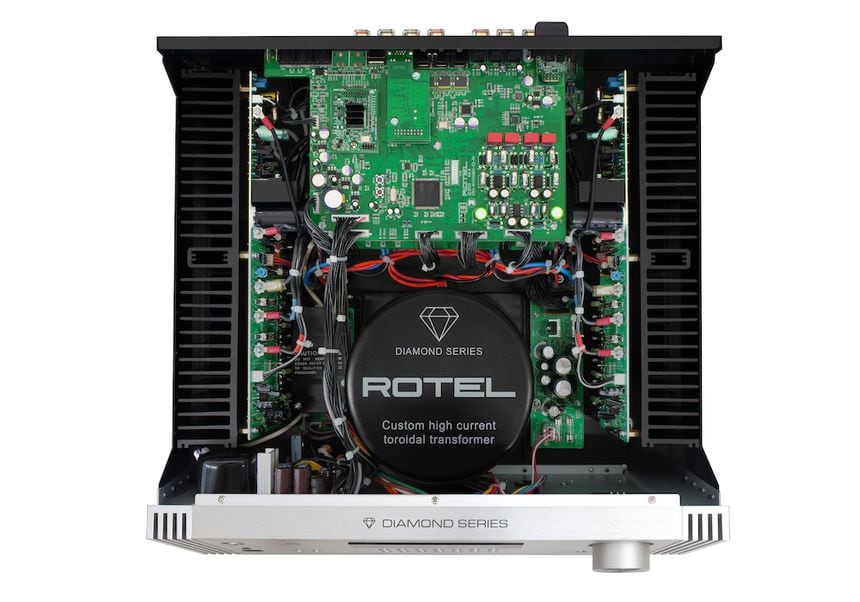
Using the Rotel RA-6000
This stereo-integrated amplifier hasn’t given in to the siren calls of network connectivity. There is an Ethernet socket, but this is mainly used for external control of the amplifier from a third-party system such as a Crestron or Control4 home automation system. Other control ports are available for integrating all types of advanced systems. However, without a network for audio, there’s no streaming function, let alone a control App. There could be one, but it would only serve to support the infrared remote control.
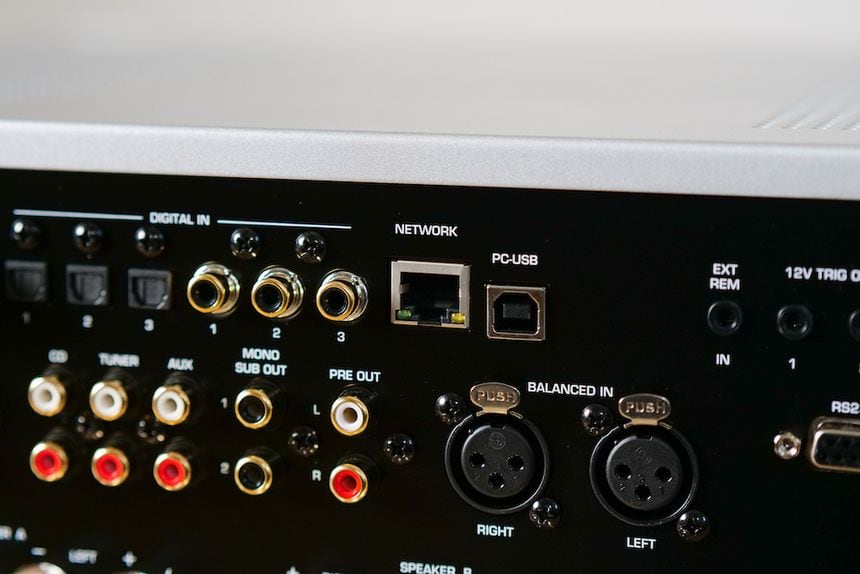
On the topic of remote controls, Rotel provides a fairly good one. It looks very basic, identical in fact to the one on the lower end of the range. They could have given the RA-6000 a specific remote control and used a more aesthetically pleasing material. However, from an ergonomic standpoint, we can't deny its practical backlighting and the useful direct access keys, which provide easy access to all the essential sources and functions.
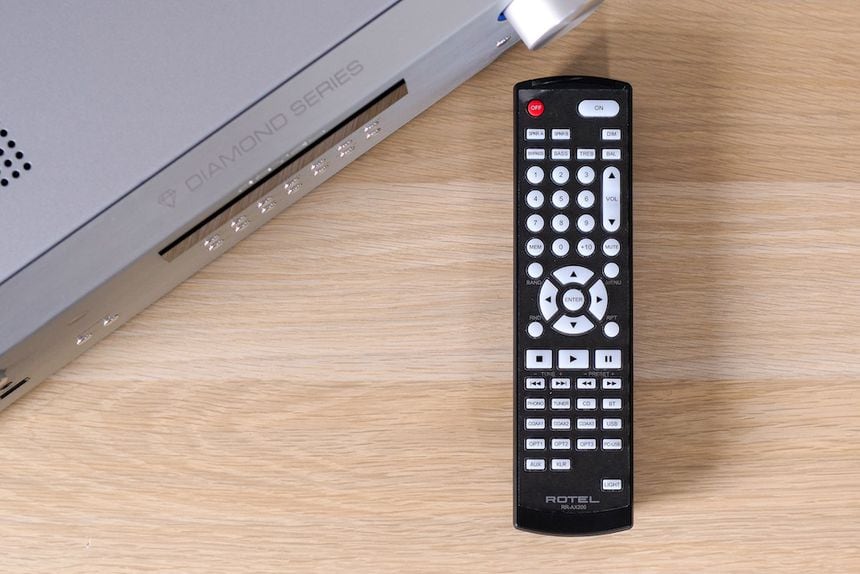
A number of settings are accessible via the display. First of all, it’s possible to activate the bass and treble controls and adjust the balance. Next, we move on to the home theatre bypass mode. This function allows you to select one of the inputs to be connected to the output of an AV amplifier or pre-amplifier. In this case, when this input is selected, the volume control of the home theatre takes over from the RA-6000. Other inputs can be configured as fixed-volume: the connected source controls the volume itself, and the RA-6000 is then seen as a power block.
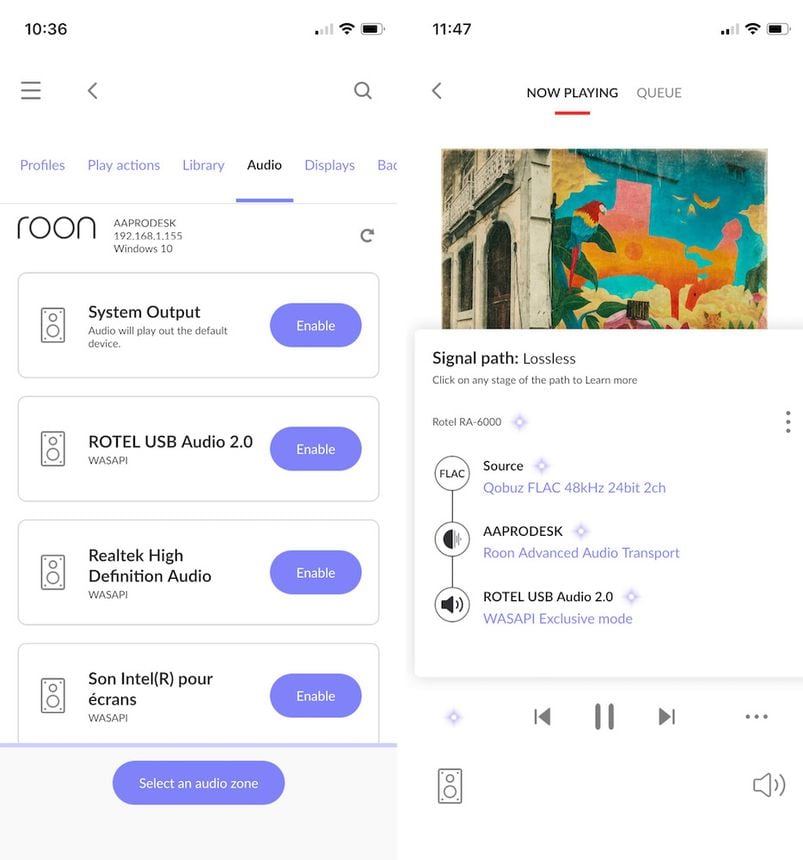
Other customisation settings allow the RA-6000 to be switched on automatically when audio is detected at one of the inputs. On the other hand, you can also set the time delay, after which the amp will turn off when no music is playing. All network-related settings for external control, as well as the display and LED brightness, appear after this menu item. Finally, the wired network connection has another advantage: the RA-6000 can be updated via the Internet. Basically, there are a tonne of customisation functions for a device that has no mobile application.
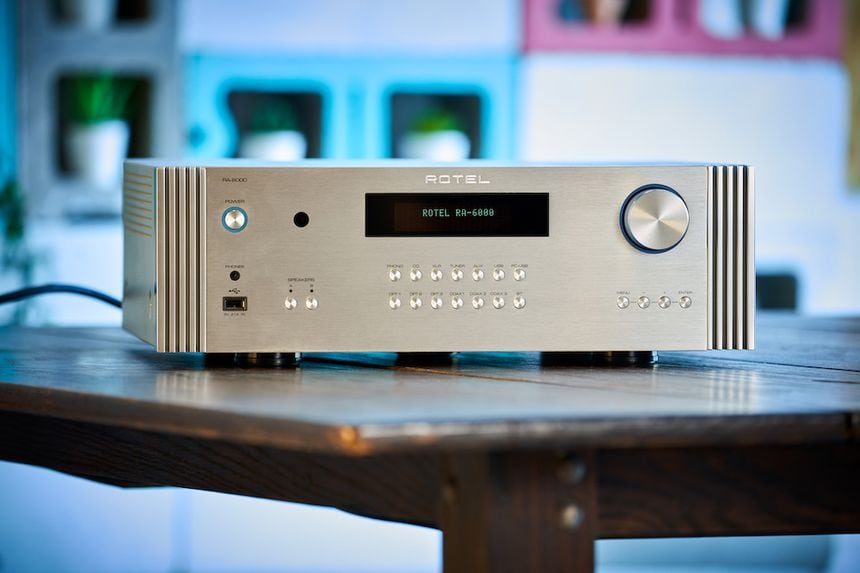
Listening Experience
We made the most of the built-in USB DAC to connect our PC as a source. As this RA-6000 is Roon Tested, we used Roon with built-in Qobuz to run our test playlists. We could have set the USB DAC to fixed-volume and used the volume control in Roon, but we chose to use the amplifier for this to make full use of the RA-6000's capabilities. Of course, we connected our usual Dynaudio speakers.
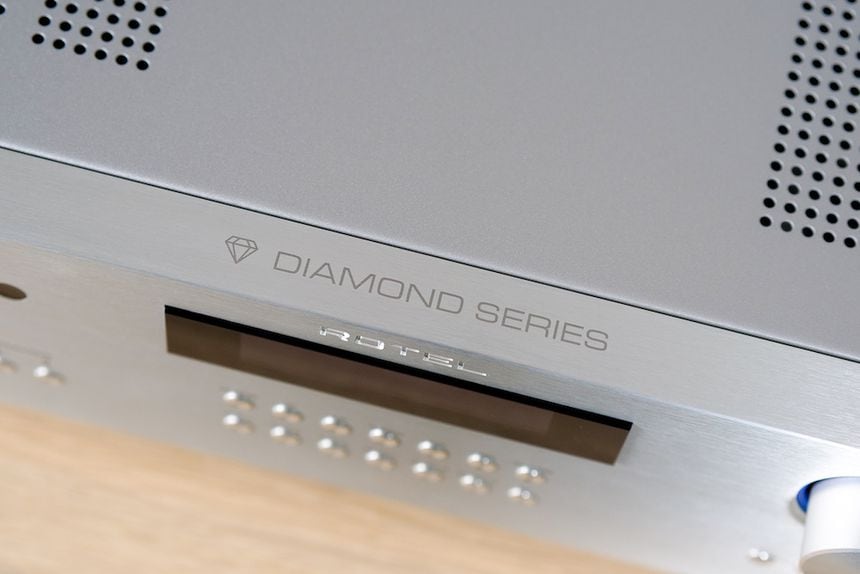
The reproduction of the numerous different instruments on Snarky Puppy’s Empire Central album was beautifully coherent. Free from rigid, predetermined placement, there’s a natural depth effect that separates the different musicians whilst simultaneously reproducing the ensemble as one cohesive body. This creates a warm, pleasant, and quite natural soundstage without needing to strip the sound back too much. The RA-6000 is sufficiently accurate in the mid-high range to facilitate the reproduction of this type of complex ensemble.
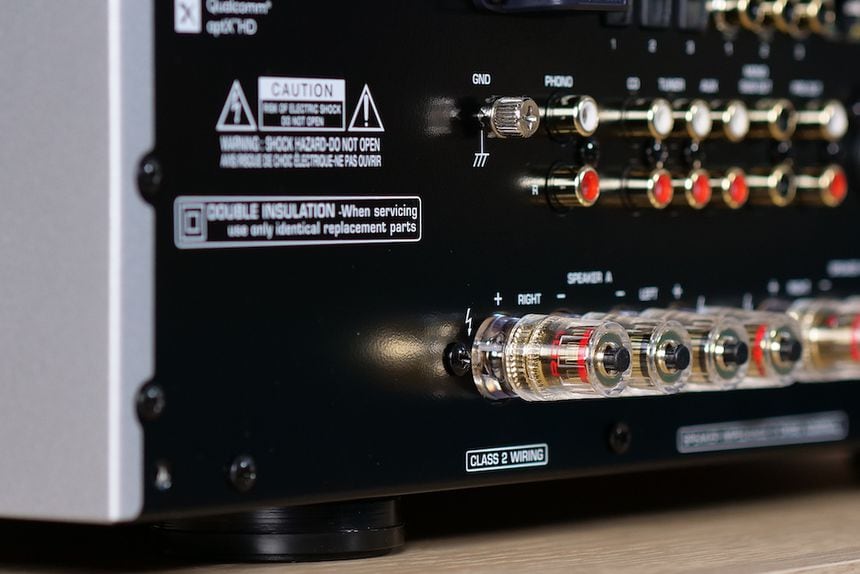
Next, we enjoyed the recent remastering of Patrice Rushen’s funk album, Pizzazz. The drums are powerful, and their impact is clearly conveyed by the RA-6000. The sounds are perfectly separated from one another, filling the space between the two speakers as a never-ending sequence of cymbals and claps burst onto the soundstage. We’ve known these songs by heart for so long, but we’ve never heard them like this before. Presence and sound separation are undeniably two things that the RA-6000 does right.
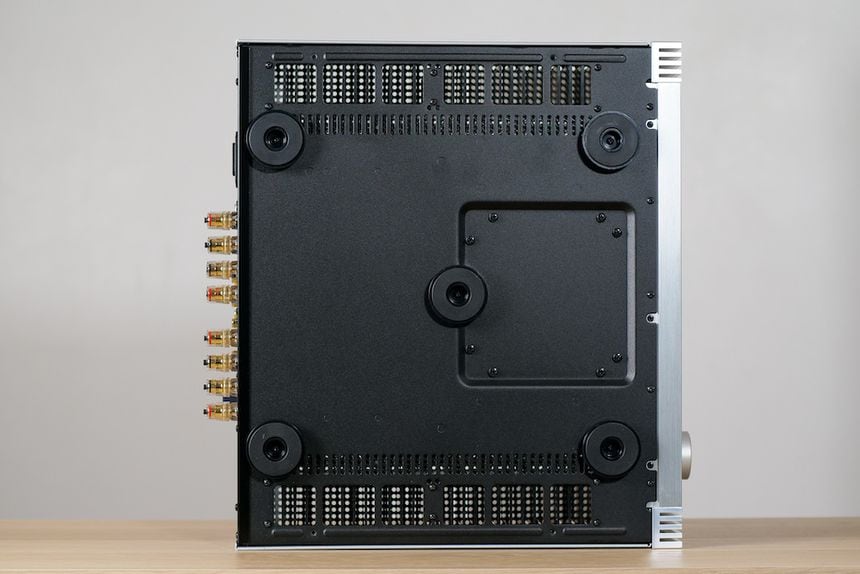
On the more intimate live recording of Charles Lloyd’s trio for the album Ocean, the instruments almost seem to take shape right in front of us. The tonal quality is on point, with each musician’s playing reproduced with plenty of micro-information. You really can hear everything without it ever sounding forced. This is also the case with Laurent Coulondre’s piano on the album Meva Festa with its South American colours. This time the recording feels closer, and the music completely fills our listening room. The dynamic capacities and power reserve of the amplifier are also a joy. The different registers don’t step on each other’s toes, and you can easily feel the layers of the bass guitar behind the other instruments. As for the drums, their reproduction is incredibly realistic. The RA-6000 is sharp in its musical exploration, and it embodies the meaning of high-fidelity sound.
The Pros :
Elegant sound signature
A full midrange
Good low register
An incredible number of different inputs
Multiple customisation possibilities
The Cons :
Only lacks an HDMI ARC input
Some minor details are not up to the premium price (remote control, volume control)
Conclusion
The Rotel RA-6000 is an integrated amplifier with a full DAC that is well worth considering. Its high power reserve, which allows it to reach high sound levels without any tension, makes it suitable for almost all HiFi systems, from bookshelf speakers to large columns. The RA-6000 is precise without being over-the-top, allowing it to reproduce all styles of music easily. There's a brightness and an elegance to its sound signature, which never resorts to a magnifying effect or listening fatigue. Of course, it needs to be connected to speakers that will form a coherent whole with it. To add to its list of great qualities, it boasts impressive connectivity, allowing you to connect just about everything to it (and in significant numbers, too). Finally, the customisation menu means you can adapt it to your existing electronics. The Rotel RA-6000 is a comprehensive device that will become a permanent fixture in your home sound set-up. You’ll rest easy knowing you’ve got a great piece of equipment in the RA-6000, leaving you to simply enjoy the music.